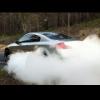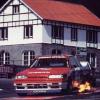Pfc Tune
Announcements
-
Similar Content
-
Latest Posts
-
Version 1 aluminium airbox is.......not acceptable No pics as I "didn't like the look.....alot" Even after all my "CAD", and measurements, the leg near the fusebox just didn't sit right as it ended up about 10mm long and made the angle of the dangle look wrong, the height was a little short as well, meh, I wasn't that confident that Version 1 was going to be an instant winner I might give Version 2 another go, there's plenty of aluminium at work, but, after having in on and off a few times, and laying in the old OEM airbox without the new pod filter and MAF, there may be an option to modify the OEM air box and still use the Autoexe front cover and filter.... maybe This > Needs to fit in here, but using the panel, and not the pod, the MAF will need to fit in the airbox though> I'm thinking as the old OEM box and Autoexe cover that is sitting in the shed is just sitting around doing nothing, and they are relatively abundant and cheap to replace if I mess it up and need another, it may well fit with some modifications to how the Autoexe brackets mounts to the rad support, and some dremiling to move it get in there, should give me some more room for activities, as I don't want to move the MAF and affect the tune Sealing the hole it requires to stick it in the air box is simple, a tight fit and some pinch weld will seal it up tight I am calling this a later problem though
-
By Dose Pipe Sutututu · Posted
and it ends up being already priced in as though you're just on 91RON without any ethanol. Car will lose a bit of economy as the short and long term fuel trims bring down the AFR back to stoich or whatever it is for cruise/idle for the engine. -
By soviet_merlin · Posted
Oh, you are right. But, in Australia E10 is based on 91RON fuel and ends up being 94RON. Hence it being the cheaper option for economy cars. The more performance oriented cars go for the 98RON fuel that has no ethanol mixed in. The only step up we have left then at some petrol stations is E85. -
There is a warning that "this thread is super old" but they ignore that anyway...
-
By TurboTapin · Posted
With 10% Ethanol, we're talking 2-3% fuel consumption difference. The emissions reductions and octane boost in my opinion far outweigh this almost non existent loss. My tanks sitting at 80%. Luckily that should go down fast as I'm on vacation again for the next two weeks.
-










Recommended Posts
Create an account or sign in to comment
You need to be a member in order to leave a comment
Create an account
Sign up for a new account in our community. It's easy!
Register a new accountSign in
Already have an account? Sign in here.
Sign In Now